Best 32-Bit Float Audio Recorders in 2023
32-bit float is one of the biggest recording innovations to-date. Find out why and which recorders offer it in this article.
For the past decade, there has been little separating professional recording devices. 32-bit float changes that.
32-bit float recording is a groundbreaking innovation in audio recording. With over 1,500dB of dynamic range, clipping is impossible and setting gain levels doesn’t matter.
Having debuted in 2019, 32-bit floating point recording is a relatively new feature and there are few recorders on the market that offer it.
This article will look at all available options and provide additional information about what 32-bit float recording is, and why it is so good.
Table of Contents:
• Best 32-Bit Recorders • Mono Recorders • Stereo Recorders • Why 32-Bit Float is Good • Float vs. Fixed • Who Is 32-Bit For? • File Size Comparison • Compatible Software
Links in this article are affiliate including Amazon Associates. Purchasing through these links will earn me a small commission at no extra cost to you. Thank you for your support!
The Best 32-Bit Float Audio Recorders
As of 2022, there are 9 recorders capable of recording 32-bit float audio. However, 3 out of those 9 are from the same product line and only differ by the number of inputs, so there’s only 5 product lines to choose from.
Also, one of those recorders is the Tascam Portacapture X8. It has received such poor reviews that I cannot recommend it.
Selection is made even easier due to some of the 32-bit recorders only being able to record in mono. For this reason, I’ve separated the options into mono-only and stereo capable results.
Best 32-Bit Float Recorders (Mono-Only)
Mono-only recorders are ideal, simple solutions for recording dialog. Often referred to as “body pack” recorders, they’re compact, easy to hide and capable of recording professional sound.
Body pack recorders are most commonly used with lavalier microphones to record dialog for production films, documentaries and podcasts. They are also popular tools among YouTubers and journalists on the go.
The 3 mono-only 32-bit float options are listed below from low → high price.
1. Zoom F2 Field Recorder
The Zoom F2 is an ultracompact field recorder capable of recording 32-bit float audio.
This no-frills option is simple, well-designed and runs on 2 AAA batteries. If it were made of aluminum it would be perfect. Instead, it is made out of cheap plastic.
Bottom line: The Zoom F2 is the perfect recorder for individuals and small-scale creators who need a fast, easy and worry-free audio solution.
PRO:
15 hour battery life
2.5v plug-in-power
included lavalier mic
locking mic and headphone jacks
CON:
cheap plastic construction
slow data transfer speeds via USB-C
bad reputation from rushed release
2. Zoom F2-BT Bluetooth Field Recorder with Timecode
The Zoom F2-BT is essentially the same device as the Zoom F2, but with Bluetooth.
The added Bluetooth feature allows for wireless timecode synchronization and app-based control with the free Zoom app “F2 Control” (Apple/Android).
The Zoom F2-BT can be timecode synced to phone apps with the Atomos UltraSync BLUE. To sync the F2-BT with video cameras, the Atomos UltraSync ONE is also necessary.
Bottom line: Because the F2-BT requires the purchase of 3rd-party synchronization devices, the Bluetooth version of the F2 is really only worth it if you already own Atomos timecode products, or if you’ll benefit from the app-based control features.
For the solo creator, the app-based control of the F2-BT is a nice, time-saving feature allowing you to start/stop recordings without having to dig into your pocket to access the device itself.
PRO:
wireless app-based control
14 hour battery life
2.5v plug-in-power
included lavalier mic
locking mic and headphone jacks
CON:
need additional devices for timecode sync
cheap plastic construction
slow data transfer speeds via USB-C
bad reputation from rushed release
3. Tentacle Track E
The Tentacle Track E is a pocket-sized field recorder and lavalier microphone with timecode support for YouTubers, vloggers, journalists, musicians, and other creators.
To get the most out of the Tentacle Track E, the Tentacle Sync E is recommended. The Sync E has made Tentacle famous in the film industry for its reliability, versatility and simplicity.
A Sync E is necessary for timecode syncing to cameras and can also sync with Track E recorders for easy post-production editing.
Bottom line: If you need accurate timecode support on a portable body pack lavalier mic, the Tentacle Track E is the best option. With Tentacle Sync E devices becoming commonplace on production sets, this new product from Tentacle can be added to your workflow seamlessly.
PRO:
solid construction
timecode generator
5v plug-in-power
lavalier mic included
16GB microSDHC card included
10 hour battery life
locking mic jack
fast USB-C transfer speeds
CON:
headphone output deactivated during recording for US version
built-in 900 mAh Li-poly battery
Best 32-Bit Float Recorders (Stereo)
The following recorders are capable of capturing stereo recordings in 32-bit float. Like the previous section, results are sorted from low → high price.
1. Zoom F3
Released in 2022, the Zoom F3 is the smallest 32-bit float field recorder available and is built for professionals.
Featuring the same, ultra low noise preamps (-127dBu) as the rest of the F-series, the Zoom F3 has a very low noise floor.
The body is built from aluminum and features robust side bars and has non-slip rubber feet on the bottom.
The F3 has an impressive battery life of 8 hours and is powered by only x2 AA’s.
Bottom line: If you only need 2 XLR inputs, the Zoom F3 offers professional quality audio in a small, tough and affordable package.
Other nice-to-have features include support for external power via a USB-C power bank, timecode support and light weight.
PRO:
ultra quiet preamps (-127dBu)
lightweight
aluminum body
small form factor
USB bus power support
CON:
only supports microSDXC cards (can be fragile)
no PiP microphone support (XLR only)
only 2 XLR inputs
1. Zoom F6
The Zoom F6 is an unbelievably compact 32-bit float recorder with 6 ultra-quiet XLR inputs (-127dB).
Marketed towards prosumers, the F6 has features for beginners and pros alike. The menu system is simple and intuitive, yet holds advanced features like precision timecode, automixing and support for MS and ambisonic recordings.
Bottom line: With its ultra-quiet preamps, advanced feature set, and 32-bit float capability, the Zoom F6 is best used by solo shooters, mobile podcasters, ambisonic recordists and people wanting a “future-proof” recorder to grow with.
32-bit float will allow the solo shooter to focus on video without having to worry about setting levels.
The automix feature is unique to the F6 and automatically pulls down mic volumes when speakers aren’t talking. This limits the amount of room noise and other distracting background audio and greatly speeds up editing times for the mobile podcaster.
The Zoom F6 is the only 32-bit float recorder with support for ambisonic recordings natively.
PRO:
6 XLR inputs
ultra-low noise preamp (-127dBu)
timecode generator
integral NPF battery sled
supports ambisonic recordings and MS
automix
CON:
no touch screen
digital limiters not as good as analog limiters on MixPre II series
build quality below MixPre II series
2. Sound Devices MixPre-3 II
The Sound Devices MixPre-3 II recorder offers half the inputs of the Zoom F6 but features lower noise preamps, better build construction and a touchscreen that makes navigating menus much faster.
With built-in Bluetooth, the MixPre-3 II can be wirelessly controlled with the Wingman app from Sound Devices to start/stop recordings, edit metadata, arm/disarm and rename tracks.
Bottom line: The decision between MixPre-3 II and F6 can be difficult. Both serve similar purposes and samples from each are difficult to differentiate in all but the most critical recording environments.
The Sound Devices MixPre-3 II has the advantage when it comes to build quality, noise, efficient operation from within a sound bag, customer support, and limiters.
The Zoom F6 has the advantage when it comes to price, # of XLR inputs, automix, and ambisonic support.
PRO:
ultra-low noise preamp (-128dBu)
timecode generator
record backup track directly to USB stick
touchscreen
software add-ons for additional functionality
CON:
no automix
no integrated NPF battery sled
requires specific USB powerbank to fully power unit
no ambisonic (only 3 inputs)
3/4. Sound Devices MixPre-6 II & MixPre-10 II
The Sound Devices MixPre-6 II and MixPre-10 II not only give you more XLR inputs in comparison to the MixPre-3 II, they also give you more functionality including ambisonic support (with add-on).
For a list comparing the entire MixPre II Series, click here.
Why 32-bit Float is So Good
32-bit float recordings seem magical because clipped recordings over 0 dBFS can be fully recovered with zero distortion. See the below GIF for a demonstration of this “magic.”
Clipped 24-bit vs. 32-bit float recordings after lowering gain in post. Notice how the 24-bit file remains clipped but the 32-bit float file perfectly recovers the data above 0 dBFS.
Before with 16 and 24-bit audio, this was not possible. If your audio peaked above 0 dBFS, the captured audio was permanently distorted because these formats lack the ability to record any data over this threshold.
32-bit float can record audio data +770 dB above 0 dBFS and -758 dB below. This gives 32-bit float recordings an incomprehensible dynamic range of 1528 dB. This figure is hard to fully grasp because dynamic range between the quietest sound on Earth (an anechoic chamber) and the loudest sound possible (194 dB) is only 185 dB.
With over 1000 dB of headroom above the quietest and loudest sounds on Earth, clipping is impossible. Distorted audio above 0 dBFS can easily be recovered in post by attenuating the signal.
Here’s a great article from Sound Devices explaining this in greater detail: https://www.sounddevices.com/32-bit-float-files-explained/
PRO:
1528 dB of dynamic range
clipped audio can be recovered in post
can spend more time being creative and less time worrying about levels
CON:
takes up more storage space
not all DAWs can read it (yet)
uses more battery
32-bit Float vs. 32-bit Fixed
There’s a lot of audio recorders and audio interfaces on the market claiming 32-bit resolution. Before we go any further, it’s important to point out the differences between 32-bit formats.
Although 32-bit fixed, also called “integer,” improves dynamic range to 192 dB, this resolution does not extend above 0 dBFS. This means that clipped 32-bit fixed recordings cannot be recovered.
Bottom line: 32-bit fixed is an integer recording format not capable of recording data over 0 dBFS. If a device doesn’t specify whether it’s 32-bit float or 32-bit fixed, it’s fixed. 32-bit float is such an achievement that capable devices advertise it as a headline feature. A quick way to confirm is to search the product page for the word “float.”
Who is 32-Bit Float For?
32-bit float is ideal for recordists under two scenarios:
Recording scenes with large dynamic range.
Recording unpredictable environments.
Scenes with large dynamic range could be dialog with whispering and shouting, or car scenes with dialog and engine sounds. In these scenarios, 32-bit float can save the sound mixer from having to adjust gains in real time and from sorting through dual-recordings in post to find the unclipped track. Thunderstorms are another example of dynamic sounds that benefit from 32-bit float.
Unpredictable environments are more for the field recordist capturing sounds unattended or outside of a studio environment. Ambient soundscapes both natural and human-made fall into this category.
As a nature field recordist, I always set my gains conservatively low just in case any wildlife comes close to my microphones. These close interactions with nature are prized by myself and others because they create auditory experiences that are extremely rare to hear otherwise.
With 32-bit float, I can now record everything at high gain for the lowest noise floor, without having to worry about clipping and losing those magical moments to distortion.
File Size Comparison
One of the downsides to 32-bit float is that is takes up more storage space than traditional bit depths. This is due to the increased data rate in comparison to 16 and 24-bit audio.
Audio data rates are calculated by multiplying the sample rate, bit depth, and number of channels together. Please see my article on SD cards for more information about audio data rates.
To save you from doing the math, I’ve created two tables below that compare the data rates of different bit depths and sample rates in relatable terms.
Duration per GB (2 Channels)
| 48kHz | 96kHz | 192kHz | |
| 16-bit | 1hr 26m | 43m 24s | 21m 42s |
| 24-bit | 57m 52s | 28m 56s | 14m 28s |
| 32-bit float | 43m 24s | 21m 42s | 10m 51s |
File Size per 60 Minutes (2 Channels)
| 48kHz | 96kHz | 192kHz | |
| 16-bit | 659 MB | 1.29 GB | 2.57 GB |
| 24-bit | 989 MB | 1.93 GB | 3.86 GB |
| 32-bit float | 1.29 GB | 2.57 GB | 5.15 GB |
Software Compatible with 32-Bit Float
Not all digital audio workstations (DAWs) can read 32-bit float files. Sound Devices has the most current list of application support that I know of. They have even divided results between MacOS and Windows. See their latest findings here.
Final Thoughts
In the right scenario, 32-bit float can be a game changer. Knowing that your audio won’t clip no matter what can save time and relieve stress.
Personally, I’m really looking forward to using 32-bit float for drop-rigs and thunderstorms. I’m interested in experimenting with ambisonic recordings so I’m leaning toward the Zoom F6. However, the quieter preamps and better build quality of the MixPre-3 II is making the decision difficult.
What 32-bit float recorder are you interested in and how will you put its dynamic range to use? Please leave a comment on this article to let me know. (Comment section at bottom of page).
Support Acoustic Nature
If you enjoyed this post and would like to help support Acoustic Nature, please consider "buying me a coffee" or becoming a Patreon with the buttons below.
As a thank you for your support, Patreon supporters receive a copy of Field Recording For Beginners, exclusive access to the full Behind The Sounds video series, nature sound library downloads, and more.
If you are unable to support the site financially, please share this post with others, or leave a comment below letting me know you enjoyed this post! Both are free and help the website grow. Thank you ♫
Thanks for reading,
-Jared

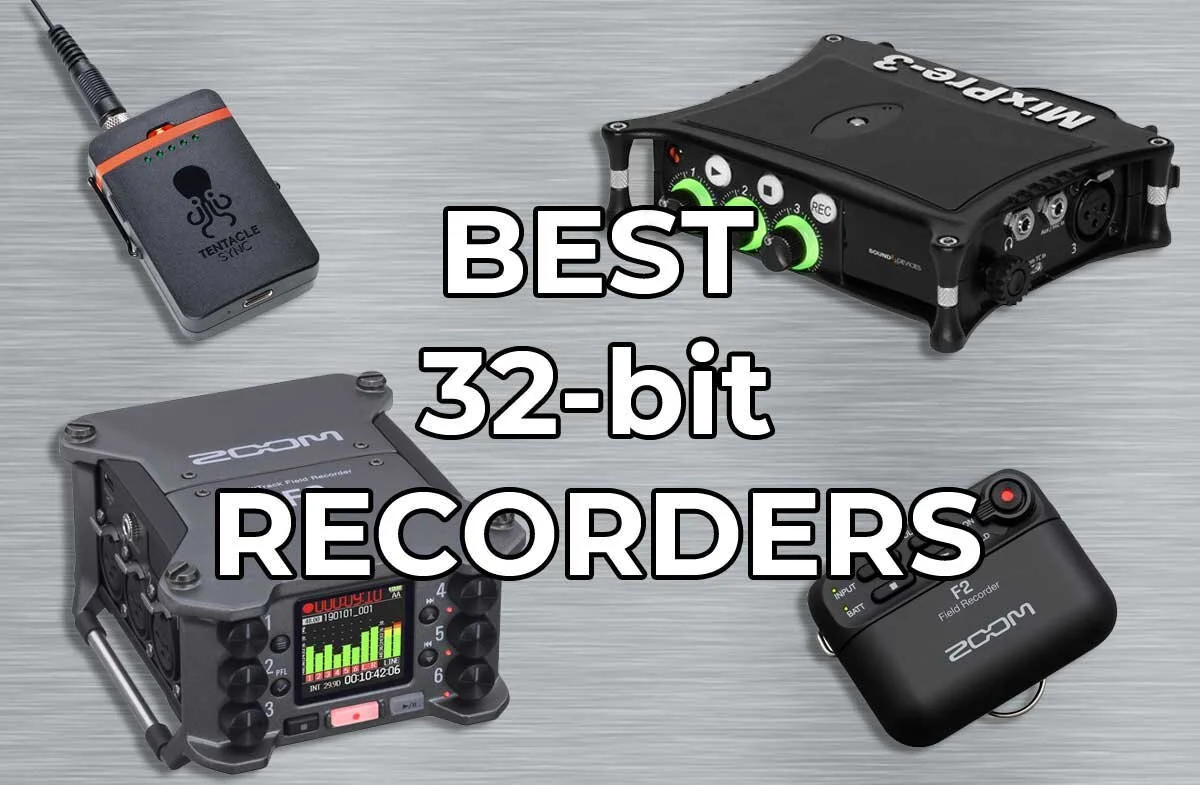
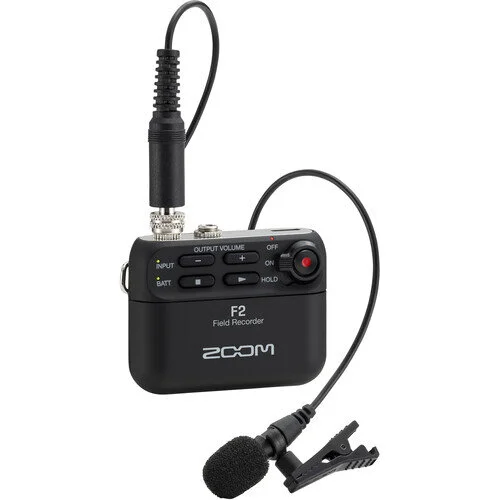
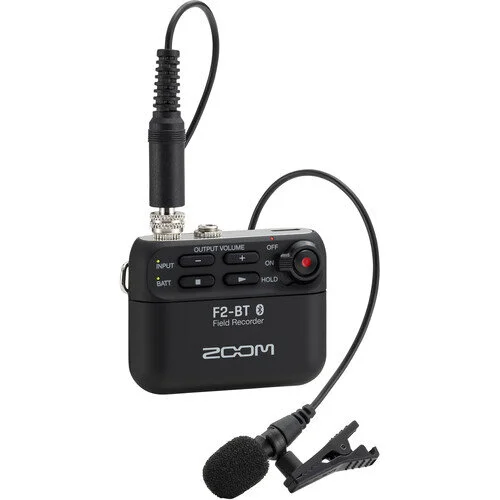
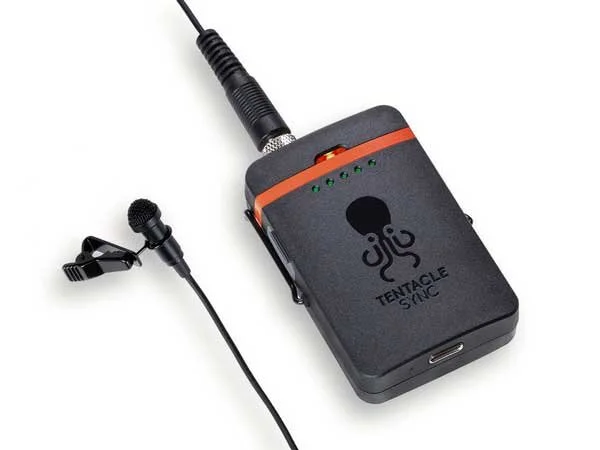
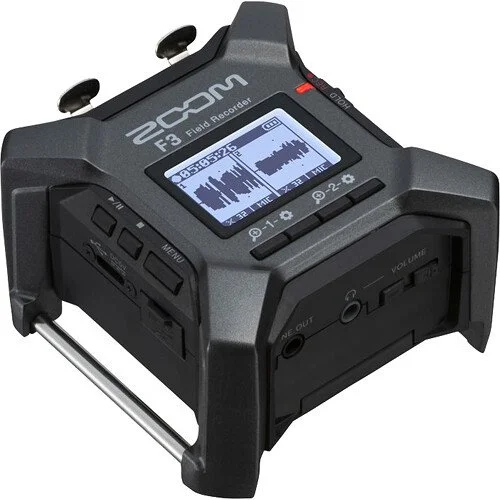


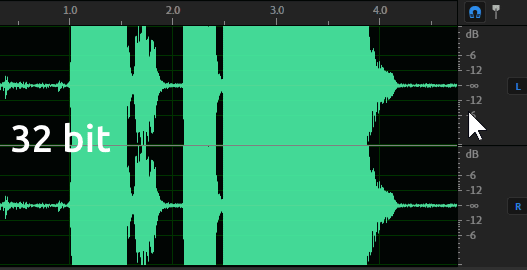



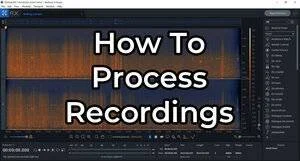









Looking for a professional sounding mic on a budget? See our top picks in this article!